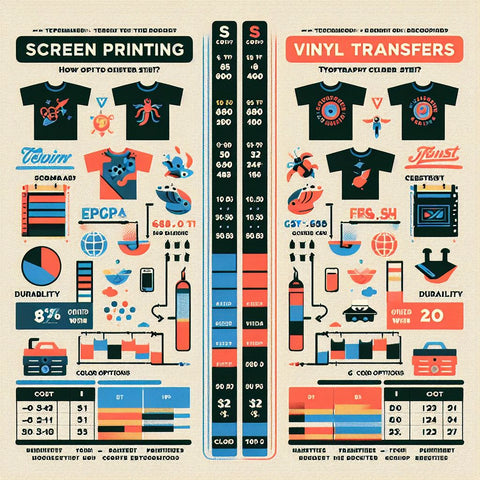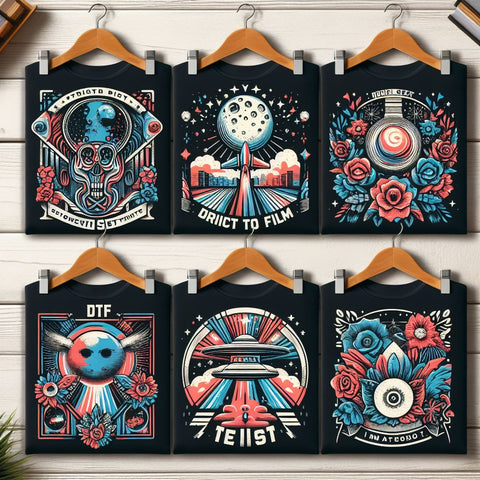When it comes to creating high-quality and durable custom t-shirts, heat transfer methods have become increasingly popular. Among the different techniques available, DTF transfers, also known as direct to film transfers, have gained significant attention. In this article, we will explore the difference between DTF transfers and other heat transfer methods, highlighting the unique benefits of DTF printing for custom t-shirts.
What are DTF Transfers?
DTF transfers involve using a specialized printer to create vibrant and detailed prints onto a heat-transfer film. The film is then heat pressed onto a t-shirt or other fabric, resulting in a durable and long-lasting design. This method offers several advantages over traditional heat transfer methods, such as screen printing or sublimation.
The Advantages of DTF Printing
1. Superior Print Quality
One of the primary advantages of DTF transfers is the exceptional print quality they offer. The direct to film printing process allows for the creation of intricate designs with sharp details and vibrant colors. DTF prints also have excellent color saturation, making them ideal for capturing detailed artwork, gradients, and even photographs.
2. Versatility on Various Fabrics
DTF transfers work well on a wide range of fabrics, including cotton, polyester, blends, and even challenging materials like nylon and leather. This versatility is particularly advantageous for businesses or individuals looking to create custom t-shirts using different fabric types.
3. Soft and Flexible Results
When compared to other heat transfer methods, DTF prints provide a soft and flexible feel on the fabric. The print becomes a part of the fabric itself, allowing for excellent comfort and durability. The design remains vibrant and doesn't crack or fade easily, even after multiple washes.
4. Quick Turnaround Time
Another benefit of DTF transfers is their quick turnaround time. The process of creating DTF prints is relatively fast, making it an attractive option for businesses needing custom t-shirts in a short timeframe. With DTF printing, you can create high-quality designs and have them ready for sale or distribution in a matter of days.
5. Cost-Effective Solution
Compared to other printing methods like screen printing, DTF transfers offer a cost-effective solution, especially for small batch orders. With DTF printing, there is no need for screens or complicated setups, making it a more affordable choice for businesses or individuals looking to produce custom t-shirts on a smaller scale.
How DTF Transfers Differ from Other Heat Transfer Methods
1. Direct to Film Printing Process
The key difference between DTF transfers and other heat transfer methods is the direct printing process onto a specialized transfer film. Unlike screen printing, where multiple screens are used to apply each color layer, DTF printing creates the entire design directly onto the film using a specialized printer.
2. Colorful and Detailed Artwork
DTF transfers are particularly suitable for colorful and detailed artwork, including designs with gradients or photographs. This method can accurately reproduce intricate details and produce vibrant prints with excellent color saturation. Other heat transfer methods may struggle to replicate the same level of detail and color vibrancy.
3. Compatibility with Different Fabric Materials
While some heat transfer methods may be limited to specific fabric types, DTF transfers are compatible with a wide range of materials, including cotton, polyester, blends, nylon, and leather. This versatility allows for greater flexibility when creating custom t-shirts and ensures high-quality results on various fabric choices.
4. Soft and Flexible Results
Unlike some heat transfer methods that result in a heavier or thicker feel on the fabric, DTF prints are soft and flexible. The design becomes embedded in the fabric, providing excellent comfort and durability. This difference makes DTF printing an attractive choice for those seeking a more comfortable and high-quality end product.
5. Quick Turnaround Time
DTF transfers offer a faster turnaround time compared to other heat transfer methods like screen printing, where multiple screens and setups are required. The direct printing process onto the transfer film eliminates extra steps and reduces production time, making DTF printing ideal for those with tight deadlines or time-sensitive orders.
6. Cost-Effectiveness for Small Batch Orders
For businesses or individuals seeking cost-effective solutions for smaller batch orders, DTF transfers can be a more economical choice. Unlike screen printing, which often requires significant upfront costs for screens and setups, DTF printing does not have such requirements. This affordability makes DTF transfers a viable option for those looking to produce custom t-shirts on a smaller scale.
In Conclusion
When it comes to creating high-quality, vibrant, and durable custom t-shirts, DTF transfers stand out as an excellent choice. With their exceptional print quality, versatility on various fabric types, soft and flexible results, quick turnaround time, and cost-effectiveness, DTF printing offers unique advantages over other heat transfer methods. Regardless of whether you are a business or an individual looking to create custom t-shirts, exploring the possibilities of DTF transfers can elevate your designs to the next level.





Comments (0)
There are no comments for this article. Be the first one to leave a message!